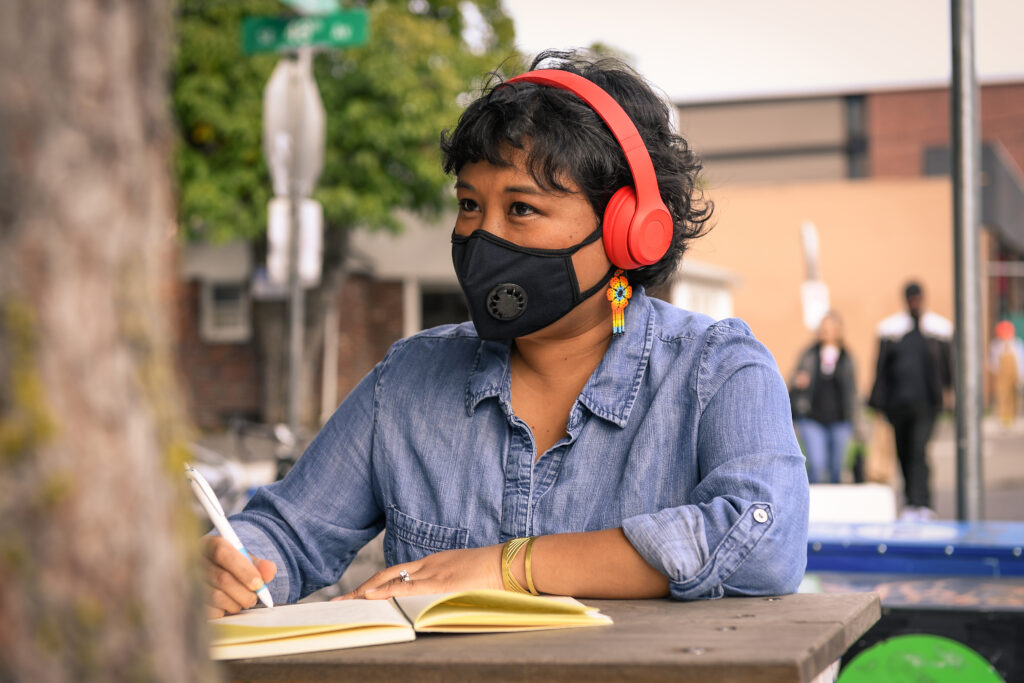
Comprehensive Sexual Health Education (CSHE) ensures access for students of many protected classes, including students with Intellectual and Developmental Disabilities (IDD). This article uses the Disability Justice framework to highlight some tools we can use to support young people with IDD in our CSHE spaces. Many curricula are not accessible for young people with IDD, and they are regularly left out of CSHE instruction entirely; often getting pulled from class “to go somewhere else” as described in the Sex Ed for People with IDD video series by the National Council of Independent Living. This lack of sexual health education for youth with disabilities is even more alarming considering the disproportionate rates of sexual abuse perpetrated against this population. The fundamental right to fully know our bodies and needs is universal for all individuals to live safe and healthy lives.
Sins Invalid is a leading organization in the disability justice movement. After the passage of the Individuals with Disabilities Education Act (IDEA) and the American with Disability Act (ADA), activists and organizers called for—and continue to work towards—a radically inclusive movement that acknowledges the intersectionality and power dynamics woven into ableism and the systems that support it. By addressing the intersectionality of disability, racial, and reproductive justice, the Disability Justice movement works towards reducing barriers and creating access for all people with disabilities. As Sins Invalid organizers Patty Berne and Stacey Milbern discuss in My Body Doesn’t Oppress Me, Society Does, the problems do not lie with the individual, but with society being built on ableism and other forms of oppression.
Principles of Disability Justice
The intersectionality of oppression and discrimination impacts youth with disabilities in a multitude of nuanced and complex ways. Sins Invalid has anchored their advocacy in the 10 Principles of Disability Justice, which serve as an excellent model for professionals to be more inclusive of our most vulnerable youth. These Disability Justice Principles give us an opportunity to address ideological, internal, interpersonal, and institutional oppressions (The Four I’s of Oppression) that are seen inside and outside learning and/or working environments. Youth serving professionals can utilize these principles to create more accessible spaces, policies, practices, & procedures. We’ve highlighted a few principles for reflection in this document for you and/or your teams to discuss and consider in your settings.
Disability Justice Applications to CSHE
The Disability Justice Principles are ideological, but crucial for a foundational understanding of inclusivity. By finding practical applications for each principle, we can create a less ableist society. An educational framework you may be familiar with is the Universal Design for Learning (UDL) which guides the design of learning environments to be accessible, inclusive, and challenging for a wide range of access needs and abilities. The focus of making spaces, content, and learning activities accessible to those with disabilities also benefits learners without diagnosed disabilities.
Common considerations for modifications that address a range of factors — such as communication, attitudinal, and environmental — can also help support a Disability Justice lens being applied to CSHE. Below are some considerations, examples, and resources for inclusive practices with these factors in mind.
Communication Modifications:
Adapt learning environments to accommodate diverse processing speeds, sensory needs, and expression styles through customized communication tools and strategies.
Universal Design Principles
- Provide multiple ways to engage, demonstrate, and process learning content including anonymous digital tools and discussion options
- Establish universal access as a core educational value by utilizing Inclusive Participation Methods
- Implement ongoing feedback/gather student input for ongoing curriculum improvement and adaptation
- Use plain language instruction with concrete examples
- Provide clear prompts and discussion protocols that build on shared ideas in multiple ways
Boundaries and Consent Education
- Teach consent principles that include disability-specific considerations regarding assistive devices
- Build skills for expressing personal limits and recognizing comfort levels – Sexual Feelings & Relationships Video
- Practice bodily autonomy through structured activities and scenarios –Consent & Sexual Relationships Video
Attitudinal Modifications:
Mindset and teaching approaches to create inclusive environments through respectful language, equitable participation opportunities, and instructional practices that recognize and celebrate diverse learning styles and capabilities.
CSHE Accessibility & Inclusion
- Share lesson and content previews to allow preparation time emotionally and physically with accessibility devices and assistive technology
- Implement trauma-informed practices
- Embody representation of Nothing About Us Without Us in content development
- Integrate disability and reproductive justice perspectives & history
- Develop healthcare self-advocacy techniques – Sexual Self-Advocacy Video
- Provide multiple engagement and demonstration formats (digital, verbal, visual, role-play scenarios, etc.)
- Include disability-specific considerations and representation in materials – Video Series Sex Ed for People with I/DD & Sexuality & People with Developmental Disabilities
Environmental Modifications:
Adjustments to learning spaces that optimize accessibility and participation through flexible seating, quiet areas, movement zones, and organizational supports, ensuring all students can engage with content in ways that match their diverse needs and abilities.
Collaborative Learning Structure
- Optimize visual, tactile, and auditory elements (fonts, colors, graphics) in delivering material for maximum readability and to enhance clarity
- Adjust sensory elements to accommodate various sensitivities (lighting, sounds, scents, personal space, etc.)
- Design group activities with defined, strength-based roles, structures, and prompts to allow for multiple points of entry for various access needs
- Enable meaningful contribution through flexible task assignments
- Offer varied classroom roles with flexible and guided participation pathways
Whether you’re in a school-based, youth-serving, or other organizational setting, centering Disability Justice Principles in how we engage with, create accessible spaces for, and advocate alongside Youth with Disabilities is essential. By doing so, we move closer to building more equitable, inclusive, and healthier lives through CSHE.
Resources:
- Disability Justice: An Audit Tool
- SIECUS: Comprehensive Sex Education for Youth with Disabilities
- ASAN: Education Advocacy Resources
- Elevatus: Sexual Assault Prevention Toolkit
Photo credit: Disabled And Here
